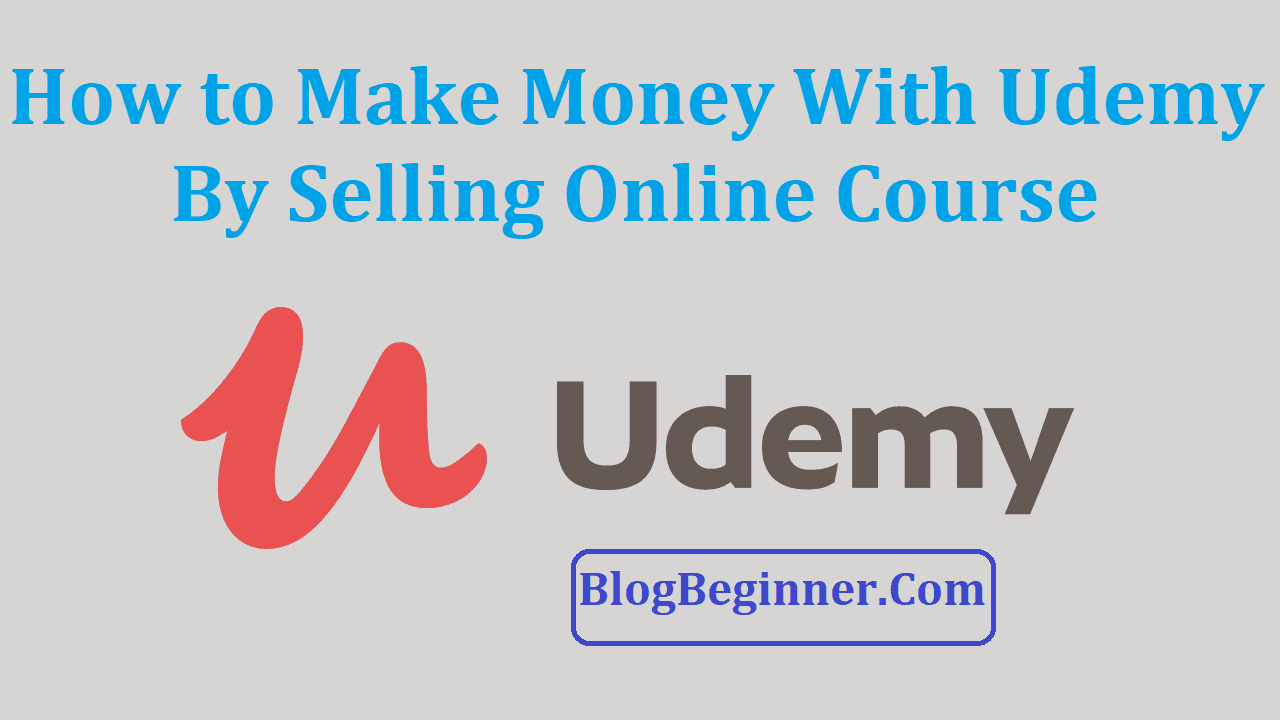If you wish to make more positive moves in your life, professionally, personally, and even spiritually, then you need to invest in self-education.
Let no one lie to you that the education you earned back in college is enough to get you through the rest of your life. It is not.
The interesting bit is that a huge chunk of the population still thinks that they can only learn by signing up for physical classes.
So, how about the knowledge you’ve learned in this technologically advanced world to educate them?
Your skills could easily make you indispensable, and the best part is that you will be earning good money in the process.
To get you started, there’s Udemy. While you could offer online courses on your own website, you’d reach a wider audience on Udemy.
Udemy represents a wide platform that brings together teachers and students. You not only access a wide platform with the best minds and great students, but you also receive guides and tips to improve your skills, teaching style, and the course.
At first, you will go through the motions, get overwhelmed and even confused, especially because you might not know exactly who you will be teaching or how to stand out from your competition.
This article outlines some of the strategies you should employ to make money by launching your online courses on Udemy.
But, before we look at the how’s, why is Udemy one of the best platforms for you to launch your online course?
- Selling courses is made easier
- Course creation tools are easy to use
- You could add the course to your existing business like a blog
- It’s a great source of passive income
- You get students from all over the world.
How to launch courses and make money from Udemy
Contents In Page
1. Choose the course topic of interest
Identification of your sweet spot is invaluable to this entire process. Your sweet spot is the course/ topic where your talents and passion get to meet the urgent needs of your market.
You’ll also need to evaluate the demand for that course, before putting in the time and effort to start on the course.
You are thinking of starting a business, and running market research is indispensable.
Even if you’ve picked out a topic, you’d like to teach know that people would like to learn, how certain are you that those people would be willing to pay for the course, let alone pay that exact amount you are asking for. Market research will guide your decisions.
2. Do a course outline
What will your students learn from your course?
Before anyone signs up for an online course, they often go through the course outline to assess the value of the course they are paying for.
To ensure that your course sells, your course should offer the highest possible value. With one topic in mind, you could employ something called content stretching.
Content stretching is the process through which you take one piece of content then leverage and stretch it as much as possible.
This strategy often works well because people want to learn everything there is to know about a course they are paying for. It is, therefore, unquestionable whether or not you should offer more on your course.
Guidelines and course templates make your course unique, helping you stand out from the competition. The use of simple and step-wise processes in the creation and packaging of your content, helps you pinpoint your audience’s pain points.
Now that you know what you need to get started, let’s get you started on the site:
3. Signup
You cannot sell courses without an account. First, sign up for your free account to gain access to the site. The free subscription lets you choose between learning a course or being the teacher.
4. Create the course
Once you’ve logged in, click on the Become An Instructor button. You have to choose the course you’ll be teaching before you select the instructor button. Your course name goes into the box on the page’s right. Click on Create Course to continue.
5. Mapping out your course
With the course you’ll be teaching established, you need to map out the contents of your course. This is basically the subtopics you will delve into.
Now, you don’t want to look like every other instructor on Udemy. So, check all the other courses offered by other instructors and everything else they teach.
You might realize that your content might be exactly like what someone else is offering.
Also, evaluating the content offered by others might give you insights into what is missing from the package offered by others.
Using the gaps, you might find yourself offering something unique and highly sought-after.
Sometimes, signing up as a student (perhaps using a different account) could help you identify the gaps to be filled. All you have to do is to check reviews of other courses somewhat similar to what you have in mind.
You should only go ahead if you find a gap you can fill perfectly with your knowledge, skills, and experience.
6. Revenue Models
To earn from being an instructor on Udemy, you should know about revenue models.
One of the best things about Udemy is that you don’t get charged to create your courses.
You earn based on how your course is sold. This is whether your lead is through the instructor, affiliate marketing, ad campaigns, or even using the Udemy organic traffic.
Sales from organic sources
You earn from students coming visiting the Udemy marketplace and purchase a course without having to use any coupon code.
In this case, the revenue share between you and Udemy will be 50 percent.
Instructor-generated coupon code sales
If you generate coupons for your course and a student uses the coupon code to buy a course from the running promotion, as well as other promotions like Facebook, YouTube or your mailing list, then you will get 97 percent of the revenue share.
Without the coupon, the Instructor earns 25 percent, and Udemy earned 75 percent of the sale.
Affiliate Sales
If a student accesses a course from an affiliate link with a 7-day window, the payment model is 50 percent to the affiliate market, 25 percent to the instructor, and 25 percent to Udemy.
Other scenarios exist depending on the source of the sale and the party that contributed to the sale the most, and also time from the day of the promotion.
So, there you have it.
Create a great course that people want to learn from, market the course to the right people, create successful social media ads and build a persuasive sales landing page to increase leads and sales.



![What Is Affiliate Marketing and How to Make Money From It [Method] Affiliate Marketing Gude How To Make Money](https://www.blogbeginner.com/wp-content/uploads/2019/03/Affiliate-Marketing-Gude-How-To-Make-Money-150x150.jpg)
![CPA vs Affiliate Marketing: How to Make Huge Money With CPA [Method] cpa vs affiliate marketing](https://www.blogbeginner.com/wp-content/uploads/2019/03/cpa-vs-affiliate-marketing-150x150.jpg)
![How to Make Money with Amazon Native Shopping Ads [Method] How to Make Money with Amazon Native Shopping Ads](https://www.blogbeginner.com/wp-content/uploads/2019/03/How-to-Make-Money-with-Amazon-Native-Shopping-Ads-150x150.png)
![How to Make Money With ShareASale Affiliate Program? [Guide+Method] Make money with shareasale](https://www.blogbeginner.com/wp-content/uploads/2019/03/Make-money-with-shareasale-150x150.png)

